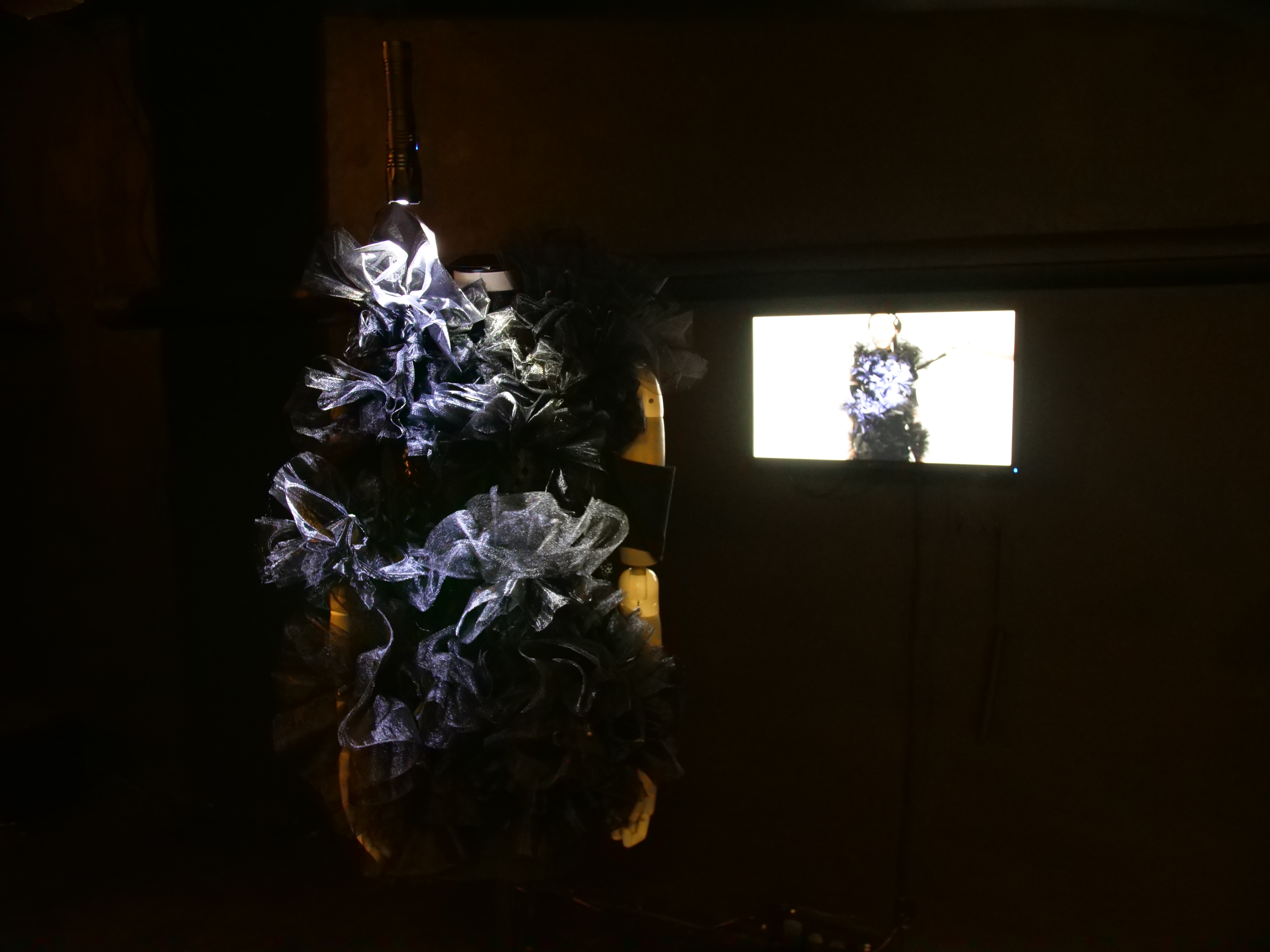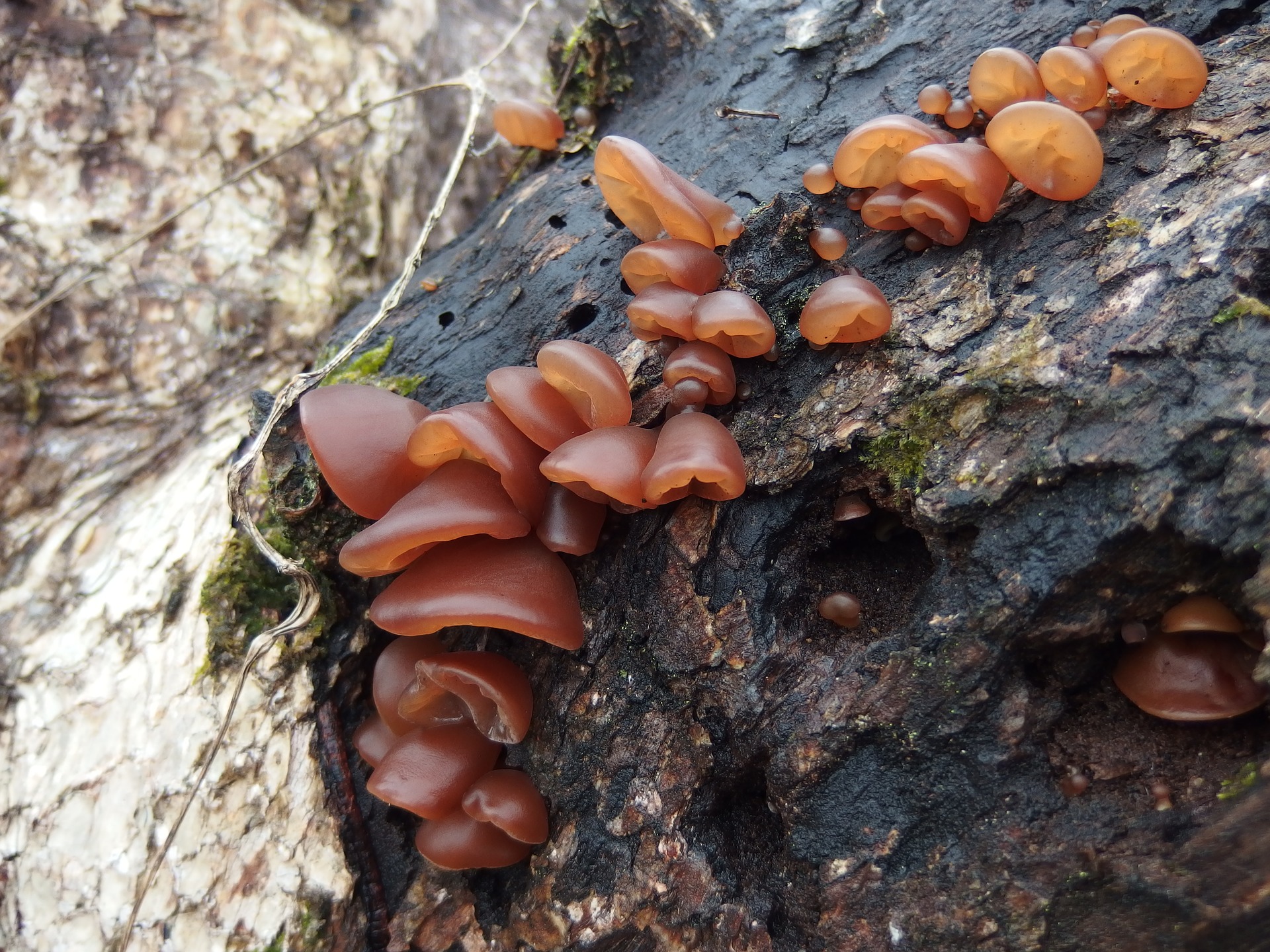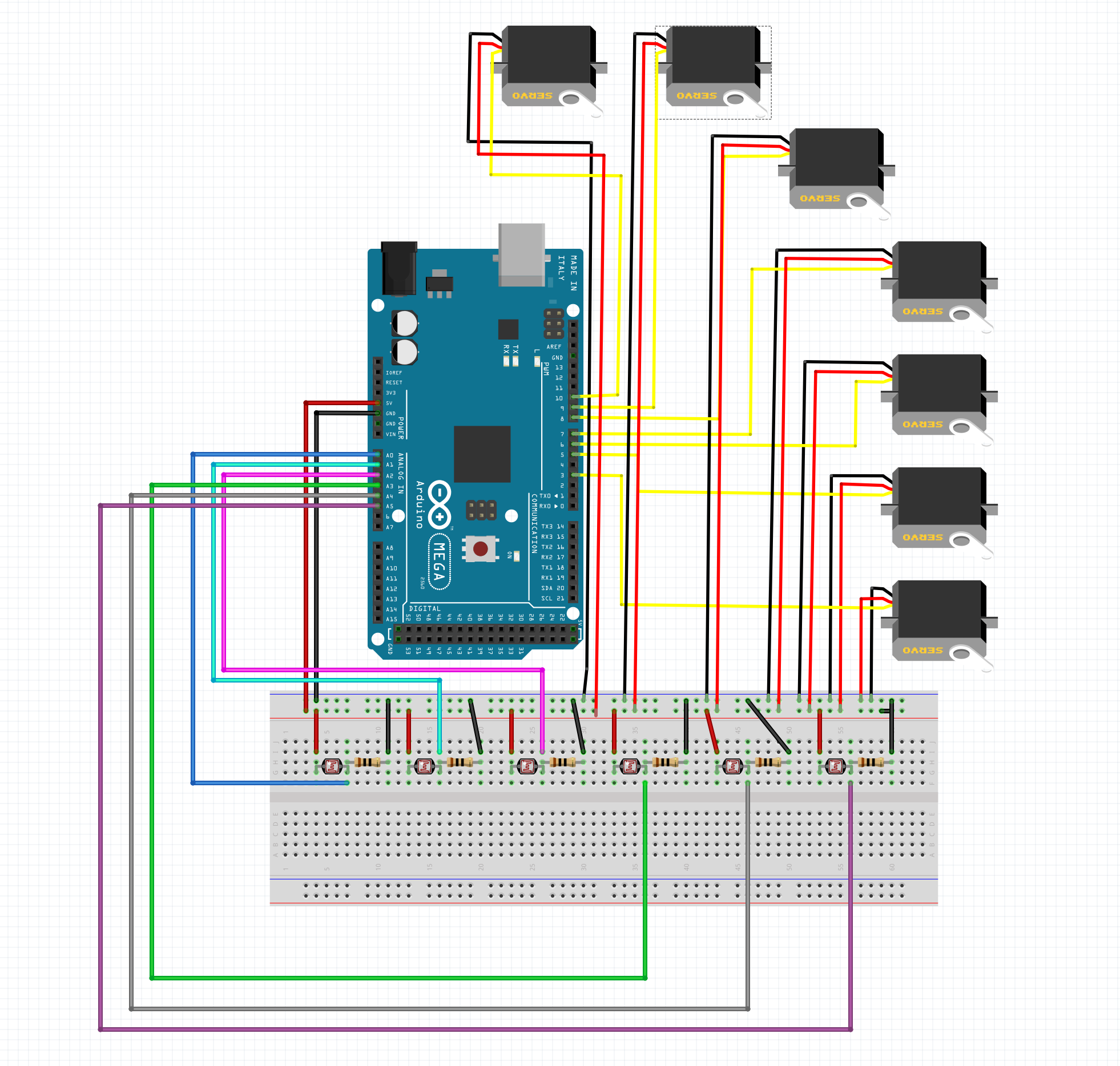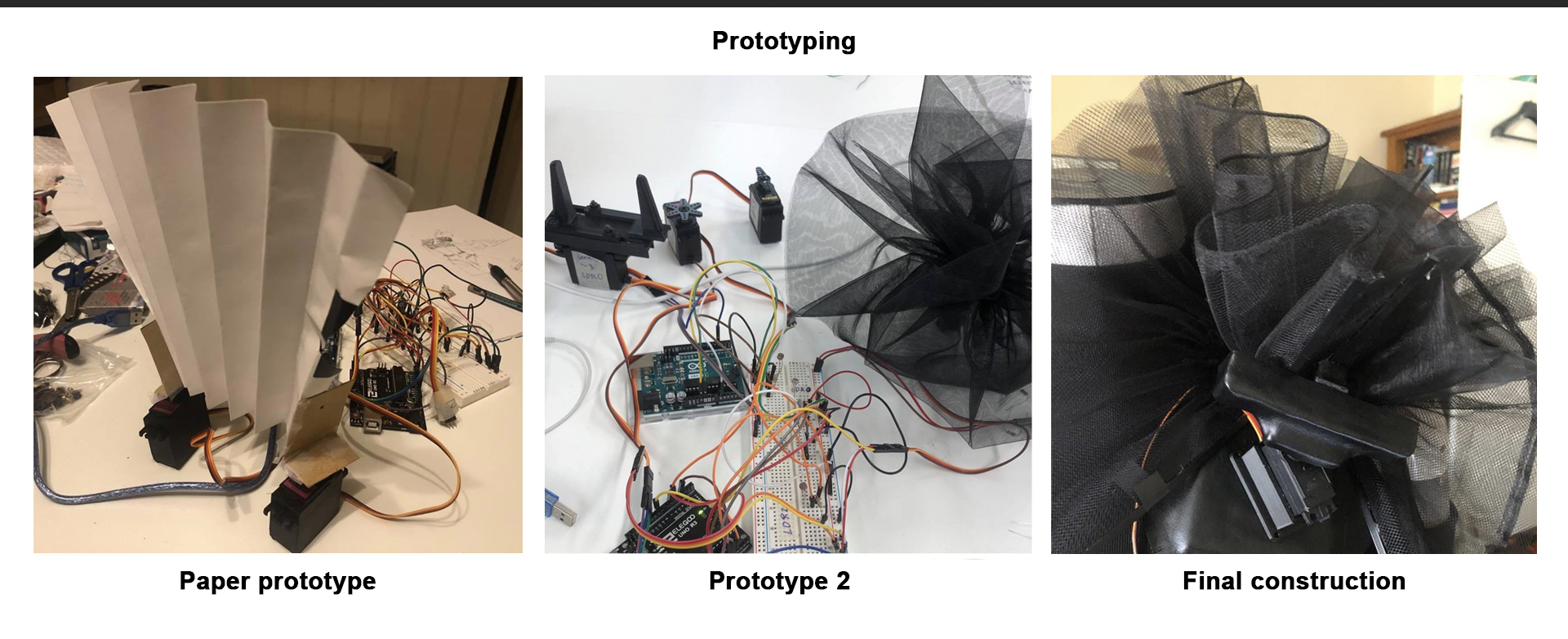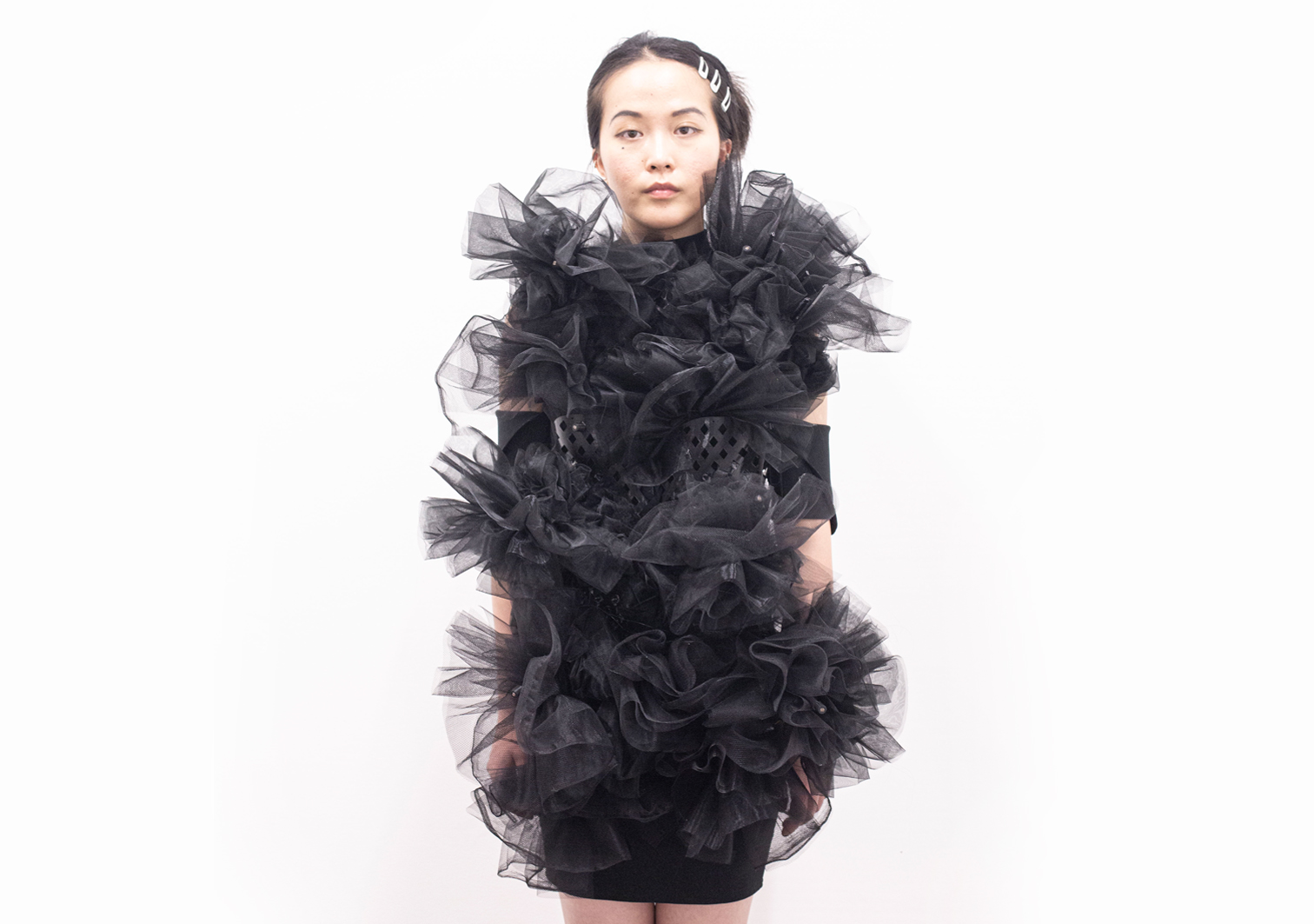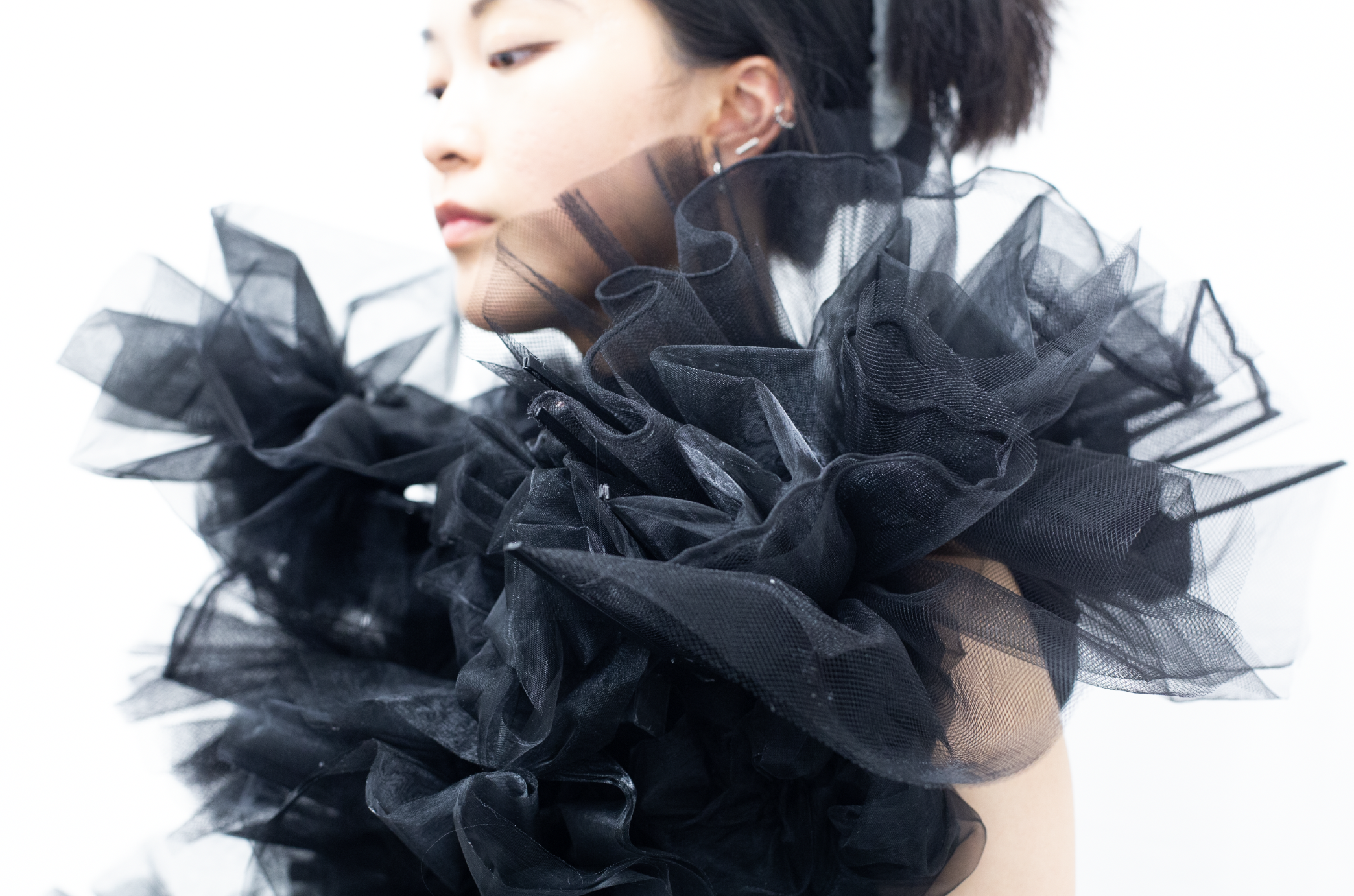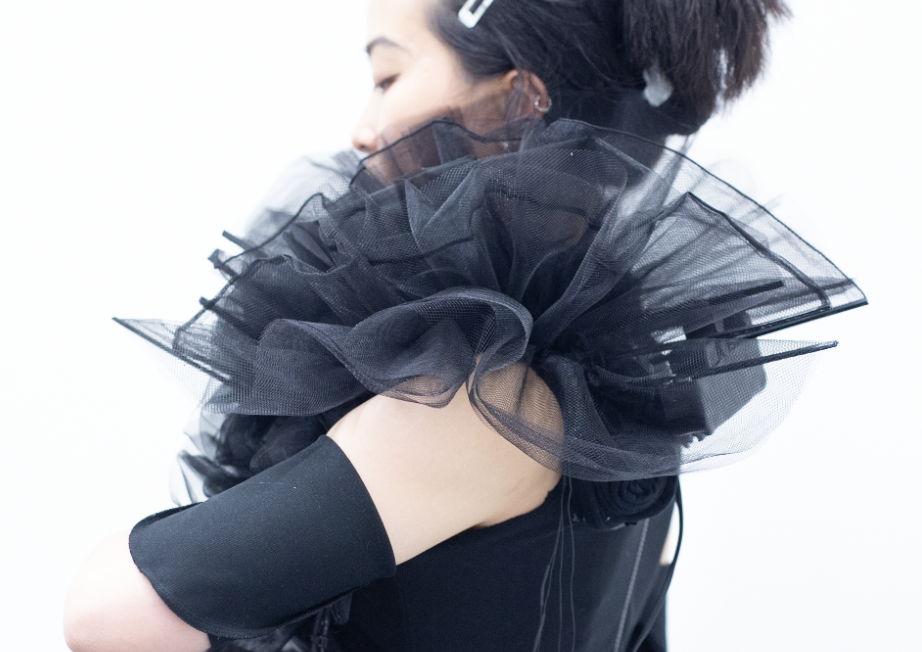Trametes
An interactive wearable/ installation that reacts to harsh light.
produced by: Marlena Kepa
Introduction
Trametes is an interactive wearable/ installation that reacts to harsh light. The project uses multiple photoresistors and servo motors that allow the audience to influence which parts of the dress will respond to a torch.
The reaction to light is an abstract interpretation of positive and negative phototropism and the behavior of plants that grow towards or turn away from the light. The Trametes form was also inspired by the fungi of the genus Polyporales and Auricularia, as well as the stony corals of the genus Merulina ampliata.
The project is a response to the combination of fashion, technology, reactions & variety of forms that occur in nature.
Installation during the show
Concept and background research
Future predictions for interactive wearables continue to show continuous growth. With newer and newer chips and sensors, we can strive to create wearables that are both more efficient and versatile. For several years, we have seen the development of such devices in a wide variety of areas, from those related to entertainment to those used by the military sectors. Whereas the most popular ones can even use the monitoring of our health parameters.
In addition, e-textiles or intelligent fabrics allow the perception of reality to be brought together with the external environment.
My attention is also drawn to the designer and professor at the MIT Media Lab, Neri Oxman. From the beginning of her career, she has been trying to combine architecture, biology, computer science and materials engineering. She was the one who influenced my interest in interactive wearable connection with the behavior of plants.
The designers that I was be inspired by include:
- Hussein Chalayan and his innovative Robotic Dresses from 2007,
- Ying Gao, who created a series of interactive wearables,
- Iris Van Herpen and her infinity dress,
- Anouk Wipprecht and her Spider Dress.
The main assumption of my work was the analysis of positive and negative phototropism and the behavior of plants that grow towards or turn away from light as well as shapes and similarities that occur in nature. Solar energy is necessary to carry out one of the most important processes in the life of green plants, which is photosynthesis, while the phenomenon of phototropism is a type of growth in which the direction of it is determined by the direction of the incident light. This phenomenon can most often be observed in the direction of plant growth, but it also occurs in organisms such as fungi.
It is the mushrooms’ shapes and forms that drew my attention and was inspired to create a dress. Fungi are characterized by an amazing range of shapes and types, while the fruiting bodies of the mushroom most often attract our attention. After analyzing various species, I decided to use the inspirations of the Polyporales and Auricularia mushrooms. The first is a row of about 1,800 different species from the Basidiomycota division. Most of them are characterized by a specific shape of frills that are covering the old trees. On the other hand, the second, commonly known as eared mushroom, actually looks like gel-like crumpled ears growing on the tree trunks.
Along with the desire to differentiate the form and the use of similar characteristics in the shapes, my attention was also drawn to the corals of the genus Merulina ampliata, which somewhat remarkably resemble fungi growing on trees, but also have a very interesting structure, which influenced the selection of one of the materials that were used for creation of the dress.
Examples of Polyporales, Auricularia and stony corals of the genus Merulina ampliata.
Technical
Trametes is an interactive wearable that uses Arduino, seven MG996R metal servo motors and six photoresistors supported with 10K resistors. Each motor uses a different rotational motion value between 0 degrees to a maximum of 80 degrees. When light with a specific threshold is detected by the LDR sensors, the motors are put into rotating motion.
Power supply:
At the time of rotation, the motors individually use values between 300 (mA) - 600 (mA) depending on the size of the strengthening structure and additional fabric.
For the purposes of installation, the project was powered by a 5V 6A power supply. Such a solution made it possible to continue powering without additional charging in contrary to battery usage. However, if the dress was to be powered by batteries, 18650 ones would probably be the best solution.
Process of preparation Video
Future Development
I enjoyed creating this project as well as the overall development of the concept. In the future, I would like to expand it and create a collection of interactive wearables that could use different sensors, and at the same time they could interact with each other in a specific way. I still have a lot of ideas and I hope to implement them further. First assumption would be to use Trametes as a part of performance where the sound of the motors could be an indicator for the supporting actors' movements while the dress and lighting would ‘play the first fiddle’. For me, that would be an abstract interpretation of the Kabuki theatre where an actress who is wearing a dress could be illuminated occasionally by actors wearing black bodysuits, who would perform their mysterious dance movements in response to the sounds emitted from servo motors’ rotation. .
Self evaluation
The project grew and changed simultaneously over the course of three months. From the beginning, I knew that I wanted to combine it with my previous experience, but I wasn’t sure what the project should look like and what sensors I would like to use. The main idea was also to get inspiration from the plant's tropism, but I had to consider which sensor and motor would be appropriate to use during installation and when worn.
Along with testing several different available motors, I decided to use MG996R metal servo motors, which turned out to be the best solution in this case. Size, weight and the lack of the need for constant power supply were of great importance here, because the motors had to be attached to the fabric in such a way that they would not affect the movement inside the dress. In addition, the characteristic sound produced with the rotation of the motors added value to the project, which I could use with the future development of the project. After deciding on the servo motors, I tried to test various sensors, but ultimately I decided to use photoresistors, which also worked best in size, weight and assumptions.
For the purposes of the installation, a "moving torch" was additionally created. Due to the fact that the dress was placed in a darkened place, I decided to add an element that would set selected elements of the dress in motion in a short time interval, so as to directly interest the viewer, who could then additionally push the torch or enter into interactions through other flashlights available next to the dress.
While developing the prototype circuit, I ran into a lot of different challenges, but the biggest surprise was when I tried to remove the breadboard from my project, it suddenly stopped working. I tried to check if everything has the right transitions everywhere, change resistors or test other LDRs, but finally I had to decide to use a Solderable Breadboard and hide the plate on the back of the dress.
All material, moving elements on the dress were sewn by hand from two different materials, i.e. organza and tulle. In addition, the parts have been reinforced with eco leather, plastic and cotton strings. I wanted to achieve the stiffness, but also the lightness of the materials, which can be also characterized by an interesting structure after the frills were hand sewn and attached to the dress .
As a base for the dress, I decided to use the purchased knitted dress, which I then modified. While as a strengthening frame for motors, I decided to use a 3D printed corset. I also wanted to refer to the characteristics of the tree, so I decided to add elements of abstract "tree resin" leaking from the corset in selected places.
From the perspective of the desire to combine four different aspects, i.e. fashion design, physical computing, inspirations of mushrooms, corals and the plant's tropism, I think that my work was able to present them in an understandable way for the audience. Many people reported that the dress looks like a tree overgrown with mushrooms, which in this case was very nice, because that was the main visual assumption of the project. Additionally, it was great to see how the visitors of the exhibition were interested in the interaction with the dress.
References
- Plant behaviour and intelligence. Trewavas, A. J, 2015
- A judgment and decision-making model for plant behavior. Richard Karban, John L. Orrock, 12 June 2018
- Wearable Interaction. Vivian Genaro Motti, 2020
Phototropism, Available at: https://en.wikipedia.org/wiki/Phototropism
Beyond Wearables: New Frontiers in Interactive Tech. HAYLEY ARD, STYLUS MEDIA GROUP |
Available at: https://www.wired.com/insights/2015/02/beyond-wearables-new-frontiers-in-interactive-tech/
Source code:
https://electronics.stackexchange.com/questions/344026/controlling-the-speed-of-servo
https://arduinogetstarted.com/faq/how-to-control-speed-of-servo-motor
https://www.arduino.cc/en/Tutorial/LibraryExamples/Sweep
3D models:
MUSE, 3D printed corset from a 3D Scan (by Samuel N. Bernier) by LeFabShopFebruary 10, 2014 |
Available at: https://www.thingiverse.com/thing:245461
Project Box | prepboard box | by blkbox_me September 26, 2014|
Available at: https://www.thingiverse.com/thing:477577/files
LDR-Holder by threeD_Designer October 18, 2019 |
Available at: https://www.thingiverse.com/thing:3920325
Photos:
Polyporales - https://pixabay.com/photos/forest-autumn-mushroom-621652/
Auricularia - https://pixabay.com/photos/mushroom-bacteria-auricularia-1948083/
Merulina ampliata - https://www.pexels.com/pl-pl/zdjecie/morze-natura-sloneczny-ocean-5116381/































































